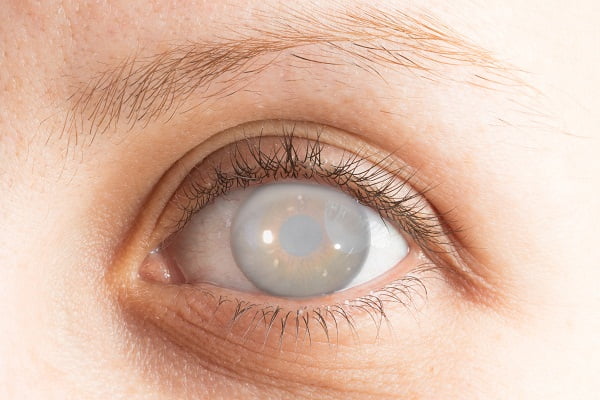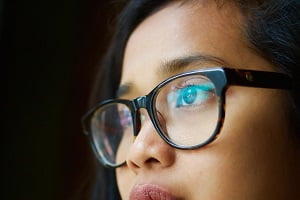Cataract: Causes and Risk Factors
- Updated on: Jun 27, 2024
- 3 min Read
- Published on Sep 26, 2019


What causes cataract and how it forms?
The lens is one of the clear and clean parts of our eye and it works like a camera lens focusing all the lights coming from an object and outside of the retina of eye for proper interpretation and clear visibility of the object.
The lens of the eye is mostly made up of water and protein. The protein is arranged in a way that it keeps the lens clear and allows the light to pass through the lens.
But as we age, this protein of the lens starts clumping together forming cloudy spots on the lens which progress with time thus making the lens appear opaque.
This spreading of cloudiness over lens of the eye makes our vision blurred, frosty and hazy by obstructing the clear passage of light through the lens. This impairs the focusing of sharp clear light rays on retina. As the progression is slow, a patient is not able to recognize that he or she has cataract till the vision of the patient is affected.
Cataract generally develops in one eye and can affect the other eye gradually in a person but is not contagious. It does not spread from one person to another. Mostly one eye is more deeply affected by cataract than the other one.
Read signs and symptoms of cataract.
Do you develop cataract only in old age?
People start to develop cataract at an age of 40 or above but the disease worsens and the complications begin as the age of the person increases that is after 60 to 80 years and above.
Almost half of the American population develop cataract or undergo cataract surgery of either or both eyes by the age of 80. This data also gives an estimation that cataract is a very common disease of eye during old age.
Although cataract is a disease of old age people. There are various people who get cataract during their childhood and adulthood due to some genetic conditions and disorders. Also people with other health conditions and using certain medications are likely to get cataract during their adulthood.
Other causes of cataract
Besides old age, genetics and other health conditions are also responsible for cataract in a person.
Genetics
Anyone having parents and siblings with cataract are likely to develop cataract during childhood or adulthood.
Congenital cataract is said to be one of the genetic types of cataract. A child is born with cataract or develops cataract immediately after birth or during his or her childhood in case of a congenital cataract. This type of cataract affects both eyes and is usually very small in size. The vision is not affected usually. But if it gets affected, surgery is done to replace the lens.
There are many other genetic illnesses that are associated with cataract. These are as follows:
- Myotonic dystrophy
- Galactosemia
- Wilson’s disease
- Down syndrome
- Homocystinuria
Health conditions
Other health conditions and medications which can cause cataract are:
- Diabetes
- High blood pressure
- Eye injury
- Past eye surgery
- Trauma
- Obesity
- High myopic condition
- Radiation therapy
- Statin medicines use
- Use of corticosteroids for long time
- Infection with herpes simplex, syphilis and rubella
- Cytomegalic inclusion disease
- Congenital cataract because of intrauterine infection or trauma
Risk factors for cataract
As we know cataract is commonly an age related eye disease and happens mostly in old age people. But there are certain factors which ease the development of cataract as compared to normal progression. Such people are more likely to develop it than others who do not have these risk factors. These risk factors are as follows:
Genetic risk factors
- Having parents, siblings with a history of cataract
- Genetic diseases like Galactosemia, Myotonic dystrophy, Down syndrome etc.
Health conditions-related risk factors
- Diabetes
- High blood pressure
- Head injury or trauma
- Eye injury
- Past eye surgery
- Obesity
- Infection with simplex, rubella viruses
- Radiation therapy
- X-rays exposure
- Cancer treatment
Medication
- Using corticosteroids for a longer period of time
- Use of statin medicines
- Lifestyle and Environmental risk factor
- Smoking
- Drinking excessive alcohol
- Exposure to sunlight for a long time, especially without sunglasses
- Exposure to ionizing radiations
Cataract is slowly progressive and do not cause any additional eye complications like itching, redness in the eyes, watery eye etc. It only makes the lens cloudy and result in blurred vision.
This vision is recovered by surgery involving replacing the lens of eye. The disease may lead to blindness if left untreated as it is the cause of blindness in many people in various countries where services for cataract surgery are not available. Read about treatment of cataract.












